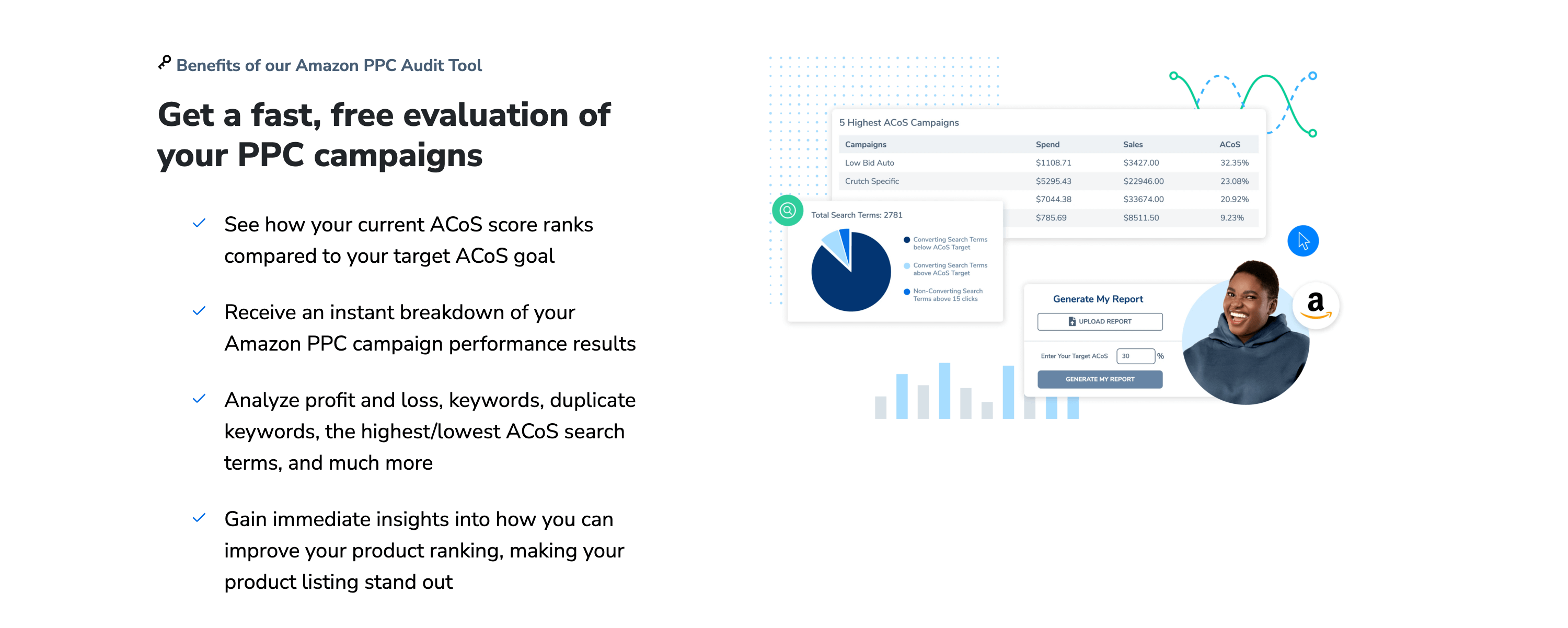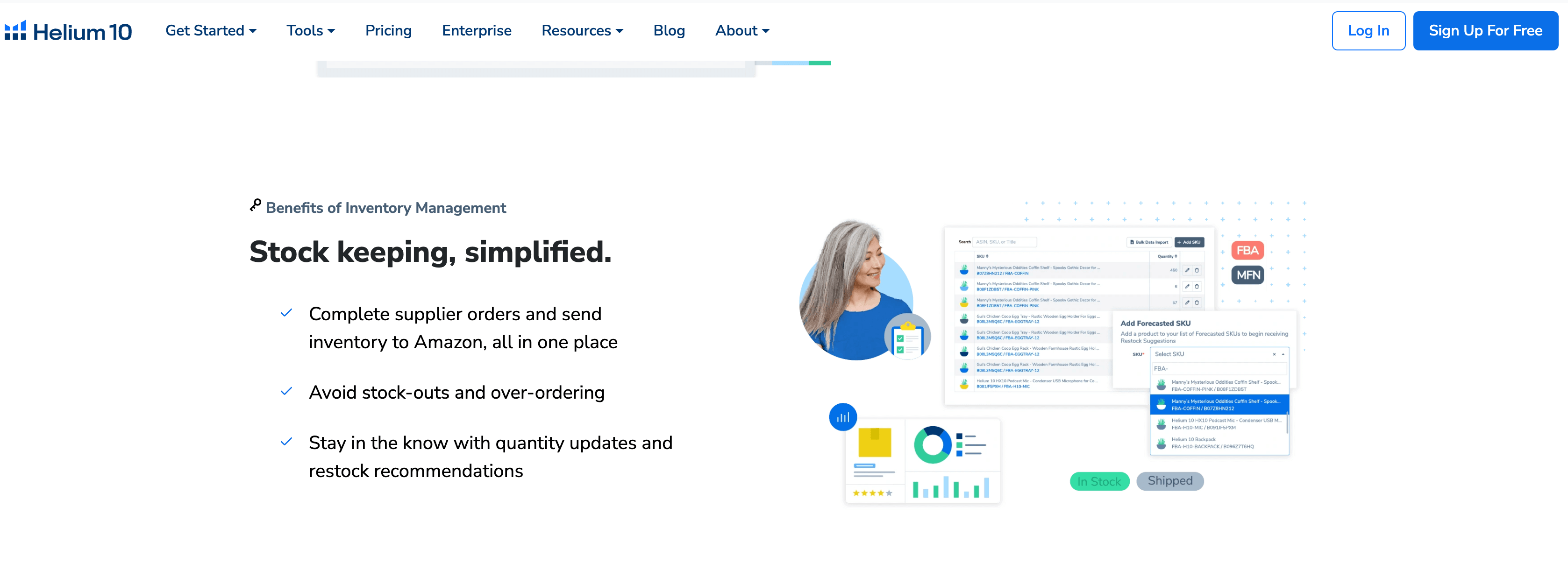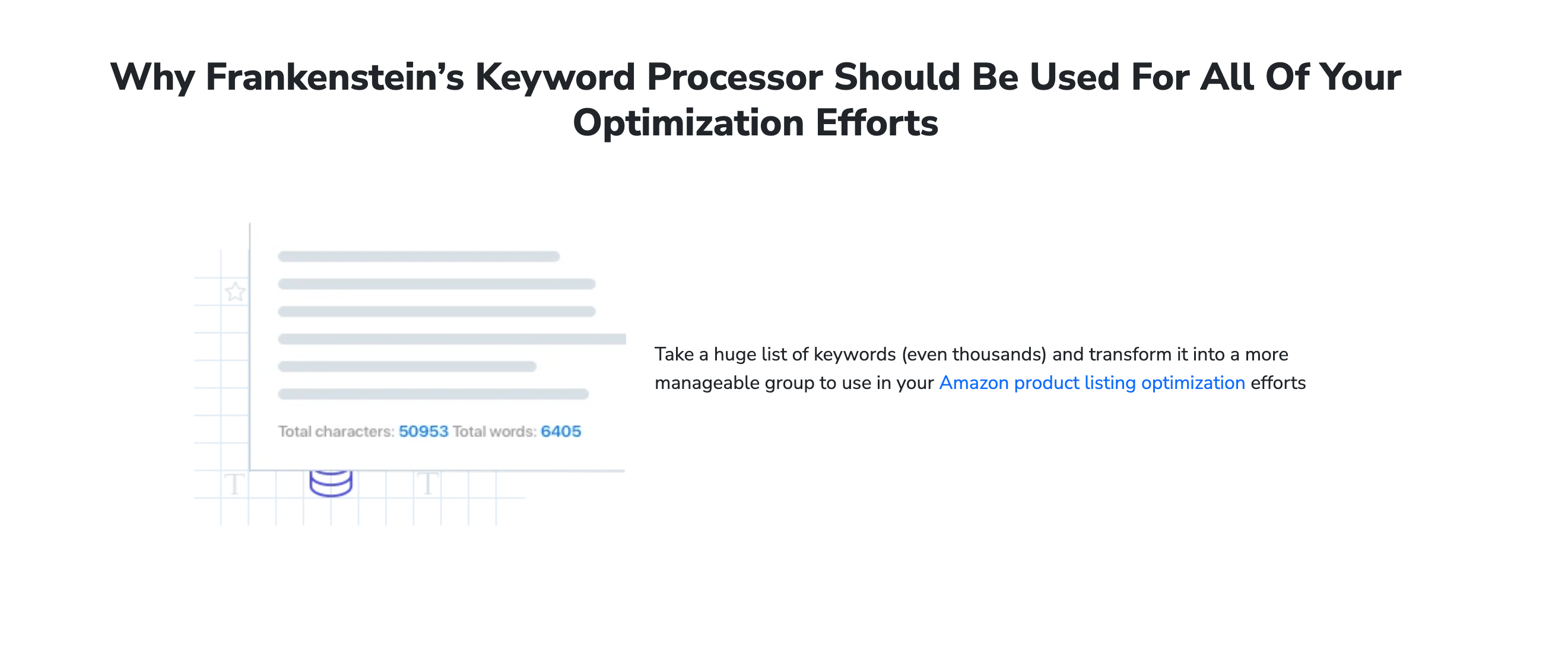Building a Master Keyword List Using Helium 10 Magnet and Frankenstein
In the competitive world of Amazon selling, keywords are the backbone of success. They determine how easily customers can find your products and directly impact your search rankings. However, building a comprehensive and effective keyword list can be a daunting task. That’s where Helium 10 Magnet and Frankenstein come into play. These two powerful tools, part of the Helium 10 software suite, are designed to help Amazon sellers uncover, organize, and optimize keywords for maximum visibility and profitability. 🚀📊
Helium 10 Magnet is a keyword research tool that generates a massive list of keywords based on a seed keyword or phrase. It provides valuable insights into search volume, competition level, and keyword relevance, helping you identify the most promising keywords for your product listings. On the other hand, Helium 10 Frankenstein is a keyword organizing and grouping tool that allows you to combine, clean, and structure your keyword list into a cohesive master list. Together, these tools can help you build a keyword strategy that drives traffic, improves rankings, and boosts sales.
In this blog post, we’ll guide you through the process of building a master keyword list using Helium 10 Magnet and Frankenstein. We’ll cover everything from conducting keyword research to organizing and optimizing your list for maximum impact. Whether you’re a beginner or an experienced seller, this guide will equip you with the knowledge and tools you need to dominate the Amazon search results. 🌟🛒
1. Introduction to Helium 10 Magnet and Frankenstein
Before diving into the process of building a master keyword list, it’s essential to understand the tools at your disposal. Helium 10 Magnet and Frankenstein are two of the most powerful tools in the Helium 10 suite, each serving a unique purpose in the keyword research and optimization process.
Helium 10 Magnet is a keyword research tool that generates a comprehensive list of keywords based on a seed keyword or phrase. It provides data on search volume, competition level, and keyword relevance, helping you identify the most valuable keywords for your product listings. With Magnet, you can uncover both broad and long-tail keywords, ensuring that your keyword strategy is thorough and effective.
On the other hand, Helium 10 Frankenstein is a keyword organizing and grouping tool. It allows you to combine multiple keyword lists, remove duplicates, and structure your keywords into a cohesive master list. Frankenstein is particularly useful for organizing large datasets and ensuring that your keyword list is clean, organized, and ready for optimization.
Together, Magnet and Frankenstein provide a complete solution for building a master keyword list. By leveraging these tools, you can ensure that your keyword strategy is data-driven, organized, and optimized for maximum impact. 📈🔍
1.1 What is Helium 10?
Helium 10 is a comprehensive software suite designed to help Amazon sellers optimize their listings, conduct market research, and find profitable niches. It includes a wide range of tools, such as Black Box for product research, Scribbles for listing optimization, and Magnet and Frankenstein for keyword research and organization. The suite is designed to provide sellers with the data and insights they need to succeed on Amazon.
1.2 Understanding Keyword Research
Keyword research is the process of identifying the words and phrases that customers use to search for products on Amazon. It involves analyzing search volume, competition level, and keyword relevance to determine which keywords are most valuable for your product listings. Effective keyword research is essential for improving your search rankings and driving traffic to your listings.
1.3 The Role of Magnet in Keyword Research
Helium 10 Magnet is a keyword research tool that generates a massive list of keywords based on a seed keyword or phrase. It provides data on search volume, competition level, and keyword relevance, helping you identify the most promising keywords for your product listings. With Magnet, you can uncover both broad and long-tail keywords, ensuring that your keyword strategy is thorough and effective.
1.4 The Role of Frankenstein in Keyword Organization
Helium 10 Frankenstein is a keyword organizing and grouping tool. It allows you to combine multiple keyword lists, remove duplicates, and structure your keywords into a cohesive master list. Frankenstein is particularly useful for organizing large datasets and ensuring that your keyword list is clean, organized, and ready for optimization.
1.5 Why Build a Master Keyword List?
A master keyword list is a comprehensive and organized list of keywords that you can use to optimize your product listings. By building a master keyword list, you can ensure that your keyword strategy is data-driven, organized, and optimized for maximum impact. This can help you improve your search rankings, drive more traffic to your listings, and ultimately increase your sales.

2. Step-by-Step Guide to Using Helium 10 Magnet
Now that you understand the basics of Helium 10 Magnet and Frankenstein, let’s dive into a step-by-step guide on how to use Magnet to conduct keyword research.
2.1 Logging into Helium 10
The first step is to log in to your Helium 10 account. If you don’t have an account yet, you can sign up for a free trial to get started. Once you’re logged in, navigate to the Magnet tool from the dashboard.
2.2 Inputting a Seed Keyword
To begin your keyword research, input a seed keyword or phrase into Magnet. This could be a broad term related to your product, such as “yoga mat” or “bluetooth headphones.”
2.3 Setting Up Your Filters
Once you’ve input your seed keyword, set up filters to narrow down your search. Magnet allows you to filter by search volume, competition level, and keyword relevance. These filters help you focus on the most relevant keywords for your analysis.
2.4 Analyzing the Results
After setting up your filters, Magnet will generate a list of keywords based on your seed keyword. You can sort the results by search volume, competition level, or other metrics to identify the most valuable keywords.
2.5 Exporting the Data
Once you’ve identified the most relevant keywords, export the data to a spreadsheet for further analysis. This allows you to keep track of the keywords and use them to optimize your listings.

3. Step-by-Step Guide to Using Helium 10 Frankenstein
After conducting keyword research with Magnet, the next step is to organize your keywords using Frankenstein.
3.1 Logging into Helium 10
Log in to your Helium 10 account and navigate to the Frankenstein tool from the dashboard.
3.2 Uploading Your Keyword Lists
Upload the keyword lists you’ve generated with Magnet into Frankenstein. You can upload multiple lists to combine them into a single master list.
3.3 Removing Duplicates
Use Frankenstein to remove duplicate keywords from your lists. This ensures that your master list is clean and free of redundancy.
3.4 Grouping Keywords by Relevance
Frankenstein allows you to group keywords by relevance, making it easier to organize and structure your master list. Grouping keywords by relevance can help you optimize your listings more effectively.
3.5 Exporting the Master List
Once you’ve organized your keywords, export the master list to a spreadsheet. This allows you to keep track of your keywords and use them to optimize your listings.

4. Interpreting the Data from Magnet and Frankenstein
Once you’ve generated and organized your keyword list, the next step is to interpret the data and apply it to your strategy.
4.1 Understanding Keyword Search Volume
Keyword search volume indicates how often a keyword is searched for on Amazon. High search volume keywords can drive significant traffic to your listings, but they may also be more competitive.
4.2 Analyzing Competition Level
The competition level indicates how difficult it will be to rank for a specific keyword. Low competition keywords are easier to rank for, but they may also have lower search volume.
4.3 Identifying Long-Tail Keywords
Long-tail keywords are longer, more specific phrases that are less competitive but still drive targeted traffic. These keywords can be valuable for capturing niche audiences.
4.4 Evaluating Keyword Relevance
It’s important to ensure that the keywords you target are relevant to your product. Irrelevant keywords may drive traffic, but they are unlikely to convert into sales.
4.5 Prioritizing Keywords for Optimization
Once you’ve identified the most valuable keywords, prioritize them for optimization. Focus on keywords with high search volume, low competition, and high relevance to your product.

5. Applying Your Master Keyword List to Your Listings
Now that you’ve built a master keyword list, it’s time to apply it to your product listings.
5.1 Optimizing Your Product Title
Incorporate the most relevant keywords into your product title. The title is one of the most important factors in Amazon’s search algorithm, so make sure it’s optimized for the right keywords.
5.2 Enhancing Your Bullet Points
Use the keywords in your bullet points to highlight the key features and benefits of your product. This helps improve your search rankings and provides valuable information to potential customers.
5.3 Improving Your Product Description
Incorporate the keywords into your product description to further optimize your listing. Make sure the description is informative and engaging, while also including the relevant keywords.
5.4 Using Backend Keywords
Amazon allows you to input backend keywords that are not visible to customers but are used by the search algorithm. Use this space to include additional relevant keywords.
5.5 Monitoring Your Performance
After optimizing your listings, monitor your performance using Helium 10 tools like Magnet and Trendster. This will help you track your search rankings and make adjustments as needed.

6. Common Mistakes to Avoid When Building a Keyword List
While Helium 10 Magnet and Frankenstein are powerful tools, it’s easy to make mistakes if you’re not careful. Here are some common pitfalls to avoid.
6.1 Ignoring Keyword Relevance
Focusing on high search volume keywords without considering their relevance to your product can lead to poor performance. Always prioritize relevance when selecting keywords.
6.2 Overlooking Long-Tail Keywords
Long-tail keywords may have lower search volume, but they can drive highly targeted traffic. Don’t overlook these keywords in your analysis.
6.3 Failing to Monitor Competitors
Competitor strategies can change over time, so it’s important to regularly monitor their listings and update your keyword strategy accordingly.
6.4 Neglecting Listing Optimization
Identifying the right keywords is only half the battle. You also need to optimize your listings to ensure that you’re effectively targeting those keywords.
6.5 Relying Solely on Magnet and Frankenstein
While Magnet and Frankenstein are powerful tools, it’s important to use them in conjunction with other Helium 10 tools like Cerebro and Trendster for a comprehensive analysis.

7. Advanced Tips for Maximizing Magnet and Frankenstein
To get the most out of Helium 10 Magnet and Frankenstein, consider these advanced tips and strategies.
7.1 Combining Magnet with Cerebro
Cerebro is another Helium 10 tool that focuses on reverse ASIN lookup. Combining Magnet with Cerebro can provide a more comprehensive view of your keyword strategy.
7.2 Analyzing Multiple Seed Keywords
Don’t limit your analysis to a single seed keyword. Analyzing multiple seed keywords can provide a broader perspective and uncover additional opportunities.
7.3 Tracking Keyword Trends
Use Helium 10 Trendster to track keyword trends over time. This can help you identify emerging opportunities and stay ahead of the competition.
7.4 Leveraging Negative Keywords
Negative keywords are terms that you want to avoid targeting. Identifying negative keywords can help you refine your strategy and focus on the most relevant terms.
7.5 Staying Updated on Algorithm Changes
Amazon’s search algorithm is constantly evolving. Stay updated on the latest changes and adjust your keyword strategy accordingly.

8. Building a Sustainable Keyword Strategy with Magnet and Frankenstein
Building a master keyword list is just the first step. To build a sustainable keyword strategy, you need to continuously analyze, optimize, and adapt.
8.1 Regularly Updating Your Keyword List
Keyword trends can change over time, so it’s important to regularly update your keyword list. Use Magnet and Frankenstein to stay informed about the latest trends and adjust your strategy accordingly.
8.2 Monitoring Your Competitors
Keep an eye on your competitors’ listings and keyword strategies. Regularly analyzing their keywords can help you stay ahead of the competition and identify new opportunities.
8.3 Optimizing for Long-Term Success
Focus on building a long-term keyword strategy that prioritizes relevance, search volume, and competition level. This will help you achieve sustainable growth and avoid short-term pitfalls.
8.4 Leveraging Multiple Helium 10 Tools
Use Magnet and Frankenstein in conjunction with other Helium 10 tools like Cerebro, Trendster, and Scribbles for a comprehensive approach to keyword research and listing optimization.
8.5 Staying Informed About Amazon’s Algorithm
Amazon’s search algorithm is constantly evolving. Stay informed about the latest changes and adjust your keyword strategy to align with the latest best practices.
| Step | Description | Tool |
|---|---|---|
| Logging In | Access your Helium 10 account | Helium 10 |
| Inputting Seed Keyword | Enter a seed keyword or phrase | Magnet |
| Setting Filters | Narrow down keywords by search volume, competition, etc. | Magnet |
| Analyzing Results | Identify valuable keywords | Magnet |
| Uploading Lists | Combine and organize keyword lists | Frankenstein |
By following this step-by-step guide and leveraging the insights provided by Helium 10 Magnet and Frankenstein, you can build a master keyword list, optimize your listings, and build a successful Amazon business. 🚀📈🛍️
In conclusion, Helium 10 Magnet and Frankenstein are invaluable tools for Amazon sellers looking to build a comprehensive and effective keyword strategy. By following the steps outlined in this tutorial, you can conduct thorough keyword research, organize your keywords into a master list, and optimize your listings for maximum visibility and profitability. Remember to stay informed about the latest trends, continuously optimize your listings, and use Magnet and Frankenstein in conjunction with other Helium 10 tools for a comprehensive approach to keyword research. 🌟📊🛒


Comments